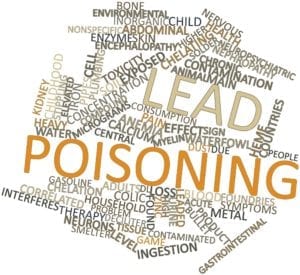Risk Factor #1: Chemical Profile of Fluoride
Fluoride is chemically synthesized for use in artificial water fluoridation, dental products, and other manufactured items.
Other than its natural existence in minerals, fluoride is also chemically synthesized for use in artificial water fluoridation, dental products, and other manufactured items. Fluoride is not essential for human growth and development. In fact, fluoride has been identified as one of 12 industrial chemicals known to cause developmental neurotoxicity in humans.
Risk Factor #2: Potential Health Effects Linked to Fluoride & Fluoridation

Knowing the risks of fluoride to human health is very important for doctors and patients.
In a 2006 report by the National Research Council (NRC) of the National Academy of Sciences, health effects from artificial water fluoridation were evaluated. Concerns were raised about potential associations between fluoride and osteosarcoma (a bone cancer), bone fractures, musculoskeletal effects, reproductive and developmental effects, neurotoxicity and neurobehavioral effects, and effects on other organ systems. Click here to read more about the health effects of fluoride.
Since the NRC report was released in 2006, a number of other relevant research studies have been published about the health risks of fluoride and the potential dangers of fluoridation. Click here to read some of the warnings.
Risk Factor #3: The History of Artificial Water Fluoridation
Fluoride was not widely used for any dental purposes prior to the mid-1940’s. Grand Rapids, Michigan, was the first city to have artificially fluoridated water in 1945. This event occurred in spite of warnings about fluoride, as well as doubts about its alleged usefulness in controlling dental caries. Despite the controversy, by 1960, fluoridation of drinking water had spread to over 50 million people in communities throughout the United States.

The fluoridation of water in the United States began in the 1940s and has been spreading ever since.
Risk Factor #4: U.S. Fluoridation Regulations

In western Europe, some governments have openly recognized risks of artificial water fluoridation, and only 3% of the western European population drinks fluoridated water. In the US, over 66% of Americans are drinking fluoridated water. The decision to fluoridate community water is made by the state or local municipality.
However, the US Public Health Service (PHS) establishes recommended fluoride concentrations for fluoridation. The PHS lowered its recommendation to the single level of 0.7 milligrams per liter in 2015 due to an increase in dental fluorosis (permanent damage to the teeth that can occur in children from overexposure to fluoride) and due to the increase in sources of fluoride exposure to Americans.
Additionally, the Environmental Protection Agency (EPA) sets contaminant levels for public drinking water. A 2006 report from the National Research Council concluded that the maximum contaminant level goal for fluoride should be lowered in 2006, but the EPA has yet to comply with this scientifically based recommendation.
Risk Factor #5: Individualized Responses to Fluoridation and Susceptible Subgroups
Current EPA regulations for fluoridation prescribe one level that applies to everyone. Such a “one dose fits all” level fails to address infants, children, body weight, genetic factors, nutrient deficiencies, individuals with diabetes, kidney and thyroid disease, and other personalized risk factors known to be pertinent to fluoride exposure.

Due to the “one size fits all” dosage
of fluoride in water, a risk is that
infants & children can be overexposed to fluoride.
Risk Factor #6: Multiple Sources of Fluoride Exposure from Fluoridation
It is important to recognize that the fluoride added to community water is not only taken into the body by drinking tap water. Artificially fluoridated water is used to create other beverages, including commercial beverages and infant formula. It is also used for growing crops, tending to livestock (and domestic pets), food preparation, and bathing.
Risk Factor #7: Interactions of Fluoride with Other Chemicals

Another risk is that fluoride can attract lead, and it has been linked to lead poisoning.
The interaction of fluoride with other chemicals is crucial to understanding risks of artificial water fluoridation. For example, the fluoride added to many water supplies attracts lead, which can be found in certain plumbing pipes. Likely because of this affinity for lead, fluoride has been linked to higher blood lead levels in children. Lead is known to lower IQs in children, and lead has even been linked to violent behavior.
Conclusion about the Risks of Artificial Water Fluoridation
Given and current levels of exposure, policies should reduce and work toward eliminating avoidable sources of fluoride, including fluoridation, fluoride-containing dental materials, and other fluoridated products, as means to promote dental and overall health.

Reducing and eliminating sources of fluoride, including fluoridation, is one way to reduce health risks.
Paul Connett, Executive Director of the Fluoride Action Network, gives a detailed presentation on the potential harmful effects of water fluoridation on residents of New Zealand.
Fluoride Article Authors
Dr. Jack Kall, DMD, FAGD, MIAOMT, is a Fellow of the Academy of General Dentistry and a past President of the Kentucky chapter. He is an Accredited Master of the International Academy of Oral Medicine and Toxicology (IAOMT) and since 1996 has served as the Chairman of its’ Board of Directors. He also serves on the Bioregulatory Medical Institute’s (BRMI) Board of Advisors. He is a member of the Institute for Functional Medicine and American Academy for Oral Systemic Health.




